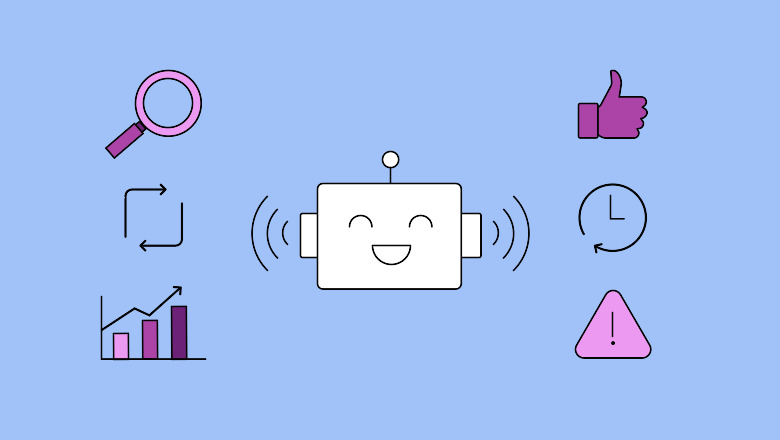In today’s fast-paced digital world, staying connected with your audience is more crucial than ever. Enter social listening—a powerful tool that allows brands to tap into the vast ocean of online conversations to better understand their customers. But what exactly is social listening statistics, and why has it become such an essential part of modern marketing strategies?
Social listening involves monitoring social media platforms, blogs, forums, and other online channels to track mentions of your brand, competitors, and related keywords. It’s more than just keeping an eye on what’s being said; it’s about analyzing these conversations to gain valuable insights into consumer behavior, sentiment, and emerging trends.
The Rise of Social Listening Statistics

The adoption of social listening has skyrocketed in recent years, driven by the need for brands to stay ahead in an increasingly competitive marketplace. Let’s dive into some key statistics that highlight the growth and impact of social listening:
- Growth of Social Listening Tools: The global social listening tools market was valued at approximately $2.3 billion in 2021 and is expected to grow at a CAGR of 7.6% from 2022 to 2028.
- Increased Usage: A recent survey found that 67% of marketers now consider social listening to be a crucial part of their marketing strategy, a significant increase from just 42% in 2024.
- Impact on Consumer Insights: Companies that utilize social listening report a 25% improvement in understanding customer needs and preferences, leading to more targeted marketing efforts.
Social Listening Adoption Rates
Social listening is no longer just a tool for large corporations. Businesses of all sizes and across various industries are now recognizing its value.
- Adoption by Industry: The retail and e-commerce sectors lead the way in social listening adoption, with 75% of companies in these industries using social listening tools to monitor customer sentiment and feedback. The tech industry follows closely, with 68% adoption.
- Adoption by Business Size: While large enterprises have been early adopters, small and medium-sized businesses (SMBs) are catching up quickly. In 2023, 54% of SMBs reported using social listening tools, compared to 38% in 2020.
Impact on Customer Insights
One of the most significant benefits of social listening is its ability to provide deep insights into customer sentiment. By analyzing the tone and content of online discussions, brands can gauge how their customers feel about their products, services, and overall brand image.
- Understanding Customer Sentiment: Social listening allows brands to track shifts in customer sentiment in real-time, enabling them to respond quickly to both positive and negative feedback. For example, if a product update is met with criticism on social media, a brand can address the issues promptly, minimizing potential damage.
- Identifying Customer Pain Points: Social listening also helps brands identify common customer pain points that may not be immediately apparent through traditional feedback channels. This information can be used to improve products, services, and customer support.
Social Listening and Brand Management
Maintaining a positive brand image is crucial, and social listening plays a vital role in brand management.
- Monitoring Brand Reputation: With social listening, brands can monitor their reputation across various platforms, quickly identifying any negative mentions or potential PR crises. This proactive approach allows them to address issues before they escalate.
- Crisis Management Through Social Listening: In the event of a crisis, social listening provides real-time data that can be used to guide the brand’s response. By understanding the public’s concerns, brands can craft messages that resonate and help mitigate the impact of the crisis.
Influence on Product Development
Social listening isn’t just about marketing—it’s also a valuable tool for product development.
- Gathering Feedback for Product Improvements: Brands can use social listening to gather feedback on existing products, identifying areas for improvement. This direct line to customer opinions ensures that product updates align with consumer expectations.
- Predicting Market Trends: By analyzing discussions around emerging trends, brands can stay ahead of the curve, developing products that meet future demands before their competitors.
Social Listening and Competitor Analysis
Understanding what competitors are doing is essential for staying competitive, and social listening provides a window into their strategies.
- Analyzing Competitor Strategies: Brands can use social listening to monitor competitors’ activities, identifying what’s working for them and what’s not. This information can be used to refine their own strategies.
- Benchmarking Performance: Social listening allows brands to compare their performance against competitors, identifying areas where they may need to improve or where they are excelling.
Role in Content Strategy
Content is king, but creating content that resonates with your audience is key. Social listening can help with that.
- Identifying Popular Topics: By tracking discussions on social media and other platforms, brands can identify trending topics and incorporate them into their content strategy, ensuring that their content is relevant and engaging.
- Tailoring Content to Audience Preferences: Social listening provides insights into what type of content your audience prefers, whether it’s blog posts, videos, infographics, or something else. This allows brands to create content that meets the needs and preferences of their audience.
Case Studies: Successful Social Listening
- Brand X: Turning Customer Feedback into Action: Brand X used social listening to identify a common complaint about one of their products. By addressing this issue, they were able to improve customer satisfaction and increase sales by 15%.
- Brand Y: Navigating a PR Crisis with Social Listening: When Brand Y faced a PR crisis, they used social listening to understand public sentiment and craft a response that resonated with their audience. This helped them recover from the crisis faster and maintain their brand reputation.
Challenges
While social listening statistics offers numerous benefits, it’s not without its challenges.
- Handling the Volume of Data: The sheer volume of data generated by social listening can be overwhelming. Brands need to have the right tools and processes in place to manage and analyze this data effectively.
- Ensuring Data Accuracy: Not all data is created equal. Brands must ensure that the data they’re analyzing is accurate and relevant, which can be challenging given the vast amount of information available online.
Future Trends
The future of social listening statistics looks promising, with new technologies and trends on the horizon.
- Emerging Trends in Social Listening: As more brands adopt social listening statistics, we can expect to see new trends emerge, such as the use of social listening for influencer marketing and customer journey mapping.
- Integration with AI and Machine Learning: AI and machine learning are set to revolutionize social listening by automating the analysis of large datasets and providing more accurate and actionable insights.
Key Social Listening Tools
Choosing the right social listening tool is crucial for success.
- Overview of Popular Tools: Some of the most popular social listening tools include Brandwatch, AIM Insights, and Sprout Social. Each offers a range of features to help brands monitor and analyze online conversations.
- Features to Look for in Social Listening Tools: When choosing a social listening tool, brands should look for features such as real-time monitoring, sentiment analysis, and reporting capabilities.
Social Listening ROI
One of the biggest questions brands have is whether social listening is worth the investment.
- Measuring the Return on Investment: Social listening can deliver significant ROI by providing insights that lead to better decision Making, improved customer satisfaction, and increased sales. To measure ROI, brands should track key metrics such as customer sentiment, brand awareness, and engagement rates before and after implementing social listening strategies.
- Examples of ROI from Social Listening: For instance, a company that used social listening to identify a growing demand for eco-friendly products saw a 20% increase in sales after launching a new line of sustainable products. Another brand improved its customer service response time by 30% by using social listening to identify and address common customer complaints more efficiently.
Getting Started with Social Listening
If you’re ready to harness the power of social listening, here’s how to get started:
-
Steps to Implementing Social Listening:
- Define Your Goals: Determine what you want to achieve with social listening—whether it’s improving customer satisfaction, enhancing your marketing strategy, or staying ahead of competitors.
- Choose the Right Tools: Select a social listening tool that fits your needs and budget. Consider factors like ease of use, the breadth of data sources, and the quality of insights provided.
- Monitor Relevant Channels: Identify which platforms your target audience uses most and focus your efforts there. This could include social media, forums, blogs, and review sites.
- Analyze the Data: Regularly review the data gathered from social listening, looking for patterns, trends, and actionable insights.
- Take Action: Use the insights gained from social listening to inform your marketing strategies, product development, and customer service practices.
-
Best Practices for Success:
- Stay Consistent: Social listening is not a one-time activity. Make it a regular part of your business strategy to stay informed about your audience and the market.
- Engage with Your Audience: Don’t just listen—act on what you hear. Engage with your audience by responding to their comments, addressing their concerns, and showing appreciation for their feedback.
- Continuously Improve: Use the insights from social listening to continuously refine your products, services, and marketing strategies to better meet the needs of your customers.
Conclusion
Social listening is no longer a nice-to-have tool but a must-have for any brand that wants to stay competitive in today’s digital landscape. By tapping into the wealth of information available online, brands can gain valuable insights into customer sentiment, track emerging trends, manage their reputation, and even improve their products and services. As the technology behind social listening continues to evolve, its importance in shaping successful business strategies will only grow.
Ready to take your business to the next level with advanced social listening tools? Request a demo from AIM Technologies today and discover how our solutions can help you unlock actionable insights and drive your brand’s success. Don’t miss out—start transforming your strategy now!
FAQs
- What is the difference between social listening and social monitoring?
- Social monitoring focuses on tracking specific metrics like mentions, hashtags, and engagement rates. Social listening, on the other hand, involves analyzing the broader context of online conversations to gain deeper insights.
- How can small businesses benefit from social listening?
- Small businesses can use social listening to better understand their customers, and compete more effectively with larger brands. It also helps them build stronger relationships with their audience by responding quickly to feedback and concerns.
- Are there free tools available for social listening?
- Yes, there are several free social listening tools available, such as Google Alerts, TweetDeck, and Hootsuite’s basic plan.
- How does social listening impact customer service?
- Social listening allows brands to proactively address customer concerns, often before they escalate into bigger issues. By identifying common complaints and areas for improvement, brands can enhance their customer service and increase customer satisfaction.
- What are the key metrics to track in social listening?
- Important metrics to track include brand mentions, sentiment analysis, share of voice, engagement rates, and trending topics. These metrics help brands understand their online presence and the effectiveness of their marketing efforts.




